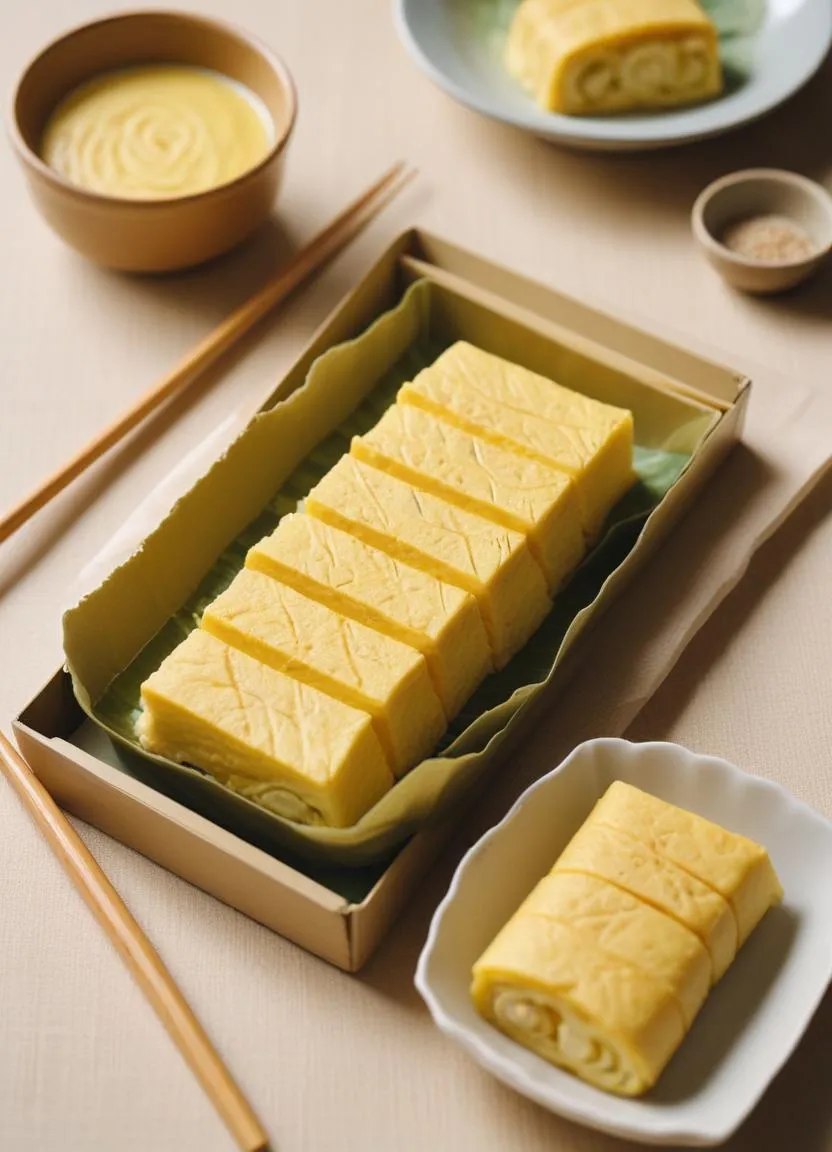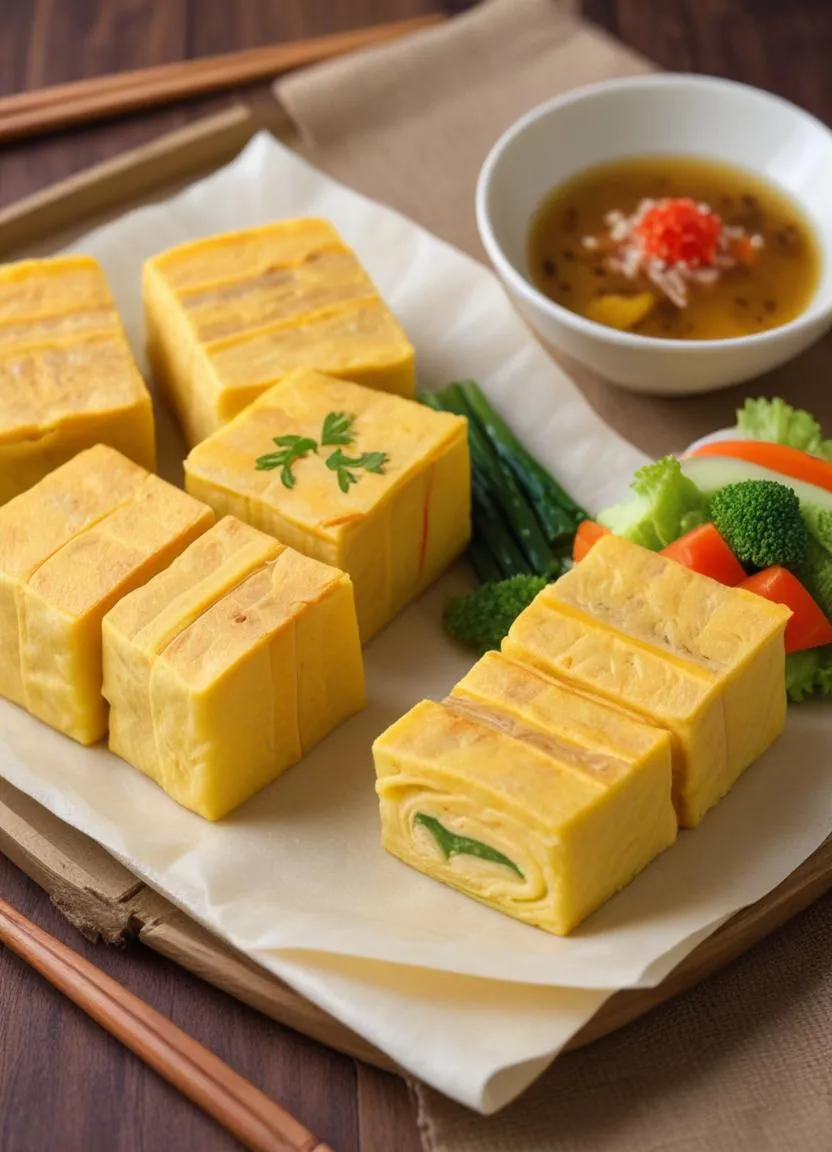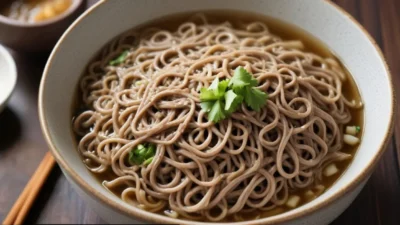Contents
Tamagoyaki is a classic Japanese rolled omelette known for its soft texture and balanced sweet-savory flavor. Made by layering thin sheets of seasoned egg, this dish is enjoyed in various ways—from breakfast plates and bento boxes to sushi toppings. Simple yet elegant, tamagoyaki reflects the careful craftsmanship and comforting spirit of Japanese home cooking.
Ingredients
- 4 large eggs
- 1 tablespoon sugar
- 1 tablespoon mirin a sweet rice wine
- 1 teaspoon light soy sauce
- 1 tablespoon dashi optional but recommended
- Neutral oil, for the pan like canola or sunflower
Instructions
- Mix gently: Crack the eggs into a bowl and beat them with chopsticks or a fork until they’re just combined. Don’t overmix—you want them smooth, not frothy. Stir in the sugar, mirin, soy sauce, and dashi if you’re using it. For extra finesse, you can strain the mixture to get rid of any lumps, but it’s not essential.

- Warm your pan: Heat the pan over low to medium heat. Lightly oil the surface using a paper towel dipped in oil. Keep that oiled towel close—you’ll be using it often.
- Start layering: Pour in a small amount of the egg mixture—just enough to cover the pan. Let it cook until nearly set, but not dry. Then, using chopsticks or a spatula, roll the layer toward one side of the pan.Add more oil, pour in another thin layer of egg, and let it spread beneath the first roll. Once it starts to set, roll everything back to the opposite side. Repeat this process until all the egg is used up. Take your time—there’s no need to rush. ⏳
- Let it rest, then slice: When you’ve finished rolling, let the omelette rest for a few minutes to firm up. Then transfer it to a cutting board and slice into bite-sized pieces. You’ll see those lovely layers inside—soft, golden, and just a bit sweet. 😋
Notes
The quiet charm of rolled eggs
If you've ever wandered into a Japanese kitchen around breakfast time or peeked into a traditional bento box, chances are you've come across a curious little yellow roll—simple in appearance, but packed with flavor and care. That’s tamagoyaki: a sweet-and-savory rolled omelette that’s both humble and deeply loved across Japan. Made by layering and folding eggs into a soft rectangular block, tamagoyaki might sound straightforward, but don’t let that fool you. There’s a real art to it. What starts as just eggs, sugar, and a few seasonings turns into a beautiful, golden dish with delicate layers that practically melt in your mouth. ✨
Made by layering and folding eggs into a soft rectangular block, tamagoyaki might sound straightforward, but don’t let that fool you. There’s a real art to it. What starts as just eggs, sugar, and a few seasonings turns into a beautiful, golden dish with delicate layers that practically melt in your mouth. ✨More than just an omelette
In Western kitchens, omelettes tend to be fast, folded affairs—whipped together for a quick meal. But tamagoyaki is something else entirely. It’s a quiet exercise in patience. Each thin layer of egg is carefully cooked, rolled, and combined into something that feels thoughtful and special. You can taste the difference. Some families prefer their tamagoyaki sweeter, while others add dashi (a light fish broth) for more umami depth. No two versions are exactly the same, and that's part of what makes it so comforting—it often carries the taste of childhood memories. 💛How to enjoy tamagoyaki
- For breakfast, tamagoyaki is perfect alongside a bowl of rice and miso soup.
- In bento boxes, it’s a colorful and satisfying protein that holds up well throughout the day.
- On sushi, it’s often served as tamago nigiri—placed on rice and tied with a strip of nori.
- With daikon radish, grated fresh and served cold on the side, for contrast.
- As a snack or even dessert, especially when made on the sweeter side. 🍱






